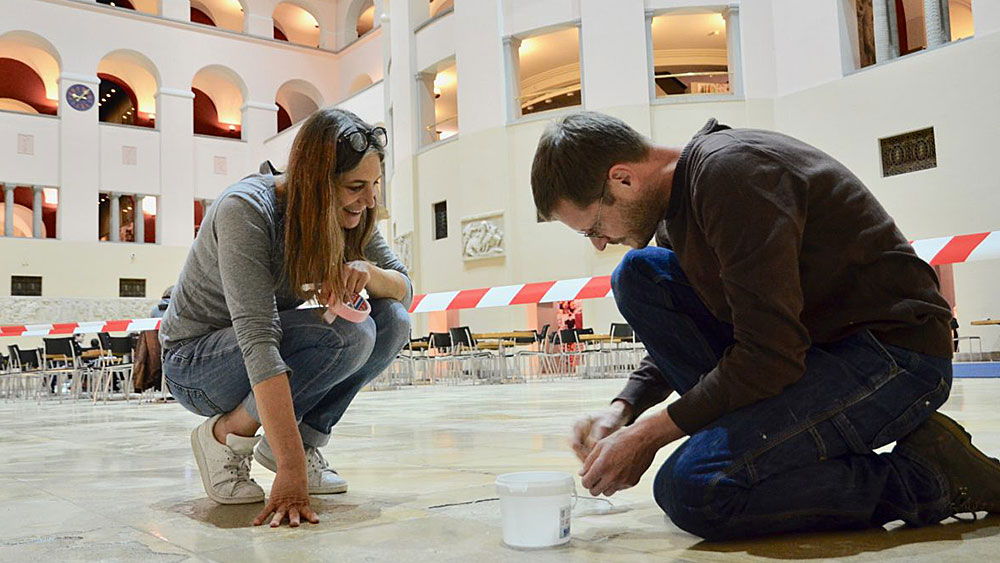Artistic Associations
The Lichthof in the UZH main building has a long history as a space for art. The light-flooded central space at the heart of the building, designed by architect Karl Moser (1860-1936), was for many decades home to items from the archaeological collection. Now the Lichthof is opening its doors to eight Zurich-based artists: Silvia Meta Demuth, Alice Heri, Dina Bha Idden, Sarah Parsons, Nadja Ullmann, Anselm Wüest, Fritz Wüest and Selina Zürrer.
Their works connect with and examine the Lichthof and the university as a place of knowledge, generating new points of reference. Nadja Ullmann, for example, has explored the indentations and holes in the stone floor – in keeping with the archaeological tradition – and filled them with inlays. In order to transfer her drawings and paintings onto the inlay pieces, she specially developed new techniques.
For Nadja Ullmann, the synthetic resin that she used to produce the inlays symbolizes the concentrated nature of the university environment. “Body and spirit, nature and culture are melted together,” says the artist, “and possibly result in a sensation in which one recognizes oneself again in a new way.” She often uses the association method in her work, which helps her to further develop her artistic practice.
Reminiscent of river courses
For archaeologist Mariachiara Franceschini, the carefully placed inlays in the branch-like grooves of the stone floor create other associations. They remind her of the networks of rivers and lakes that continually split off into new branches over the course of time. Franceschini’s own research involves reconstructing historic river courses as places of contact in Italy in the archaic and classical periods (ca. 600-350 BC). Using river courses, she can research the relational history of natural and cultural landscapes, as rivers are not just nature’s lifelines, but also a dynamic network of interactions and demarcation of boundaries.
Comparing methods
Barbara Basting, head of art education for the city of Zurich and university board member, is full of enthusiasm for the exhibition: “Isn’t it great that Zurich artists can exhibit here in the Lichthof under the plaster cast of one of the most transcendent classical works of art, under the soaring wings of Nike of Samothrace?” Both art and science are to do with methods, says Basting, although those methods may differ. “But that’s why it’s interesting to see them come together,” she continues.
The exhibition in the Lichthof is open to all UZH members and their guests. Visitors are invited to extend the chain of artistic associations with their own thoughts and ideas – perhaps linked to a lecture they have given or attended, a book they are reading, or simply a recent conversation. You are welcome to submit idea chains in the form of short texts, pictures, videos or other formats. The organizers are looking forward to seeing where the exchanges and the shared association process will lead.
You can post your contributions directly on Facebook www.facebook.com/unizuerich or send them by e-mail to sciencefestival@grc.uzh.ch.
